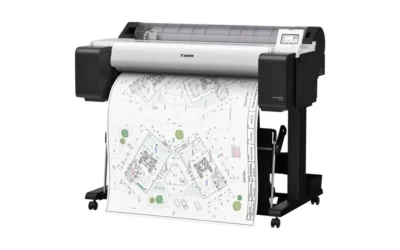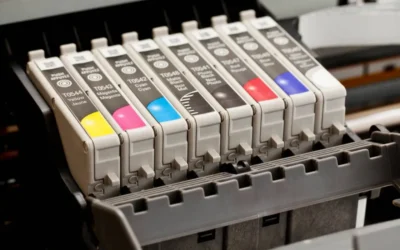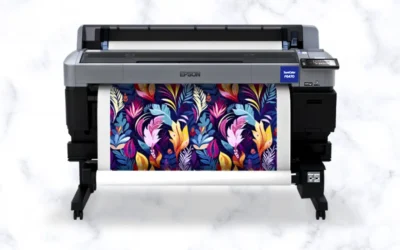How to Unclog Epson Printer? Easy Solutions
Printers are important devices for work, school, or creative activities, but over time, printers can have typical problems, such as clogged nozzles or blocked ink pathways. Clogged nozzles can lead to problems such as faded colors, lines, or streaks, or blank spaces when printing. Learning how to unclog Epson printer nozzles can help you save money on printer repair. In addition, these methods can extend the life of the machine. In many cases, users simply assume their printer has broken when it is a clog, and therefore, assuming the printer is broken is often a mistake; in fact, a clog is often an easy fix with simple methods. Within this description, you will discover practical ways to troubleshoot a clog, clean your printer nozzles, and look after your device’s maintenance moving forward. You should be able to easily follow these steps to restore your prints and expect a reliable device whenever you are ready to print again.
Common Signs of a Clogged Epson Printer
The initial phase of troubleshooting the issue entails observing for signs of a clog. If your printer begins printing faint pages, missing colors, or there are lines on the page, it is probably due to one or more of the nozzles being congested. In some cases, it will even generate a message that there is a problem with ink flow or the printhead. These signs will give you a heads-up to take action before the problem becomes worse.
Use the Built-in Cleaning Utility
Epson printers typically have a cleaning function that automatically resolves problems like printhead clogs without manual effort. Once again, you will return to the Epson software on your computer to observe the “maintenance” or “tools” option. After this, you can now print a nozzle check page. If there is a section that includes broken lines or missing colors, repeat the “head clean” cycle. Typically, just one or even two would be required to resolve a clean, but do not do all of this over and over again, as it is likely to waste the ink.
Manual Cleaning of Printheads
If you find that the automatic cleaning utility did not work, you may need to attempt manual cleaning. Manual cleaning involves carefully removing the ink cartridges from the printer and wiping the printhead with a lint-free cloth. The cloth should be dampened with either distilled water or a specialized liquid cleaning solution. If the ink clogs are persistent, you may place the printhead on a paper towel that has been soaked with cleaning solution for a number of hours. This process is designed to dissolve dried ink and to create an easier flow of ink. However, it is important to note that care must be taken when cleaning, even with towels and cloths. You do not want to damage sensitive components of the printhead accidentally.
Using Cleaning Kits
An alternate option to clear blocked nozzles is to make use of Epson-compatible cleaning kits. These cleaning kits typically include a syringe, a tube, and a cleaning solution specifically designed to remove any ink blockage. By carefully following the instructions that come with the cleaning kit, you are able to inject the cleaning solution directly into the printhead in order to dissolve dried ink and clear blockage. While this alternative does reveal itself to be more technical than an auto cleaning or simple tissue and cleaning fluid wipe, a number of users attest to their effectiveness on tough clogs that will not clear from standard cleaning.
Preventive Maintenance Tips
Preventing clogs is just as important as clearing them up. One of the best ways to keep the ink flowing and keep it from drying in the nozzles is to use your printer regularly. If you rarely print anything, print a nozzle check every few weeks at a minimum to keep the ink moving and prevent it from settling. Also, storing your printer in a dust-free space and keeping it from getting hot or cold will help. Ask your technician or service rep what storage conditions are best for your specific printer. Finally, you should always use the ink cartridges that generate the best quality, especially those made and recommended by Epson. Using after-market or counterfeit cartridges will greatly increase your chances of encountering blockages.
When to Seek Professional Help
Sometimes, despite your best efforts, clogs will persist. When this happens, it may be that the best solution is to speak with someone who is trained to service and maintain printers, like a technician. An Epson service center can run a deep cleaning process or replace the printhead if that isn’t successful. If you have an expensive printer and printing is a critical part of your business productivity, knowing when you’ll need a professional is important and will save you the frustration of trying to use incorrect cleaning processes and risk damaging your printer.
Quick Tips to Keep in Mind
- Run the nozzle check before assuming major issues.
- Avoid leaving your printer unused for long periods.
- Use genuine Epson ink cartridges.
- Do not overuse the cleaning cycle to save ink.
- Handle printheads with care during manual cleaning.
Conclusion
Printer clogs can be irritating, but the good news is that the troubleshooting of clogs can usually be resolved fairly quickly and easily. By simply being aware of the indications of a clog, using the built-in cleaning utility, performing manual cleaning (or with cleaning kits), and preventively printing, and using the equipment correctly, you can get your printer back to printing at its highest performance again, and avoid future issues. If you have a particularly stubborn clog, you can always opt for professional servicing. Knowing how to unclog your Epson printer will enhance your print quality, save your time, money, and unpleasant feelings of being stressed.



